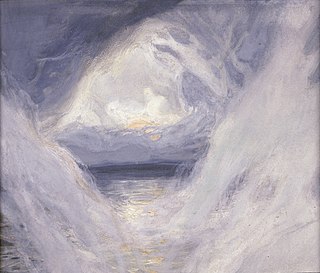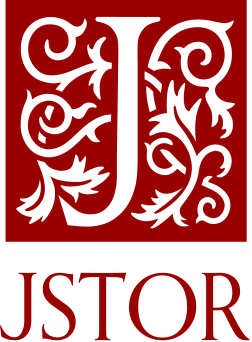
Sulawesi, formerly known as Celebes, is an island in Indonesia. One of the four Greater Sunda Islands, and the world's eleventh-largest island, it is situated east of Borneo, west of the Maluku Islands, and south of Mindanao and the Sulu Archipelago. Within Indonesia, only Sumatra, Borneo and Papua are larger in territory, and only Java and Sumatra have larger populations.
Buginese or Bugis is a language spoken by about five million people mainly in the southern part of Sulawesi, Indonesia.
Makassarese, sometimes spelled Makasar, Makassar, or Macassar, is a language of the Makassarese people, spoken in South Sulawesi province of Indonesia. It is a member of the South Sulawesi group of the Austronesian language family, and thus closely related to, among others, Buginese.
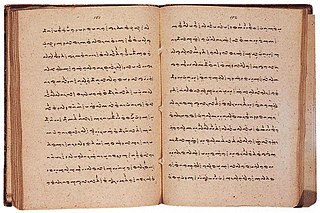
The Lontara script is a Brahmic script traditionally used for the Bugis, Makassarese and Mandar languages of Sulawesi in Indonesia. It is also known as the Bugis script, as Lontara documents written in this language are the most numerous.
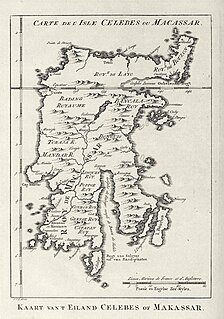
The Kingdom of Luwu is generally thought to be the oldest kingdom in South Sulawesi. In 1889, the Dutch Governor of Makassar placed Luwu's heyday between the 10th and 14th centuries, but offered no evidence. The La Galigo, an oral epic composed in a literary form of the Bugis language, is the likely inspiration of Braam Morris’ dating. The La Galigo depicts a vaguely defined world of coastal and riverine kingdoms whose economies are based on trade. Two important centers of this world are Luwu and the kingdom of Cina whose palace site lay in the western Cenrana valley, near the hamlet of Sarapao in Pamanna district. The incompatibility of the La Galigo's trade-based political economy with the agricultural economies of other South Sulawesi kingdoms has led scholars to posit an intervening period of chaos to separate the two societies chronologically.

Bima is a city on the eastern coast of the island of Sumbawa in central Indonesia's province West Nusa Tenggara. It is the largest city on the island of Sumbawa, with a population of 142,443 at the 2010 Census, but the latest official estimate is 148,984. It is separate from the adjoining Regency of Bima which had a population of 407,636 at the 2010 Census.
Coppong Daeng Rannu is a master of Makassar ethnic-group dances. She is best known as Rice Goddess in performance I La Galigo.
Mandar is an Austronesian language spoken by the Mandar ethnic group living in West Sulawesi province of Indonesia, especially in the coastal regencies of Majene and Polewali Mandar, as well as in a few settlements in the islands of Pangkep District and Ujung Lero, a small peninsula near Pare-Pare).

The Second Bone War was fought from 20 February 1859 until 20 January 1860 between the forces of the Dutch East Indies and the Kingdom of Bone.

Fort Rotterdam is a 17th-century fort in Makassar on the island of Sulawesi in Indonesia. It is a Dutch fort built on top of an existing fort of the Gowa Kingdom. The first fort on the site was constructed by the a local sultan in around 1634, to counter Dutch encroachments. The site was ceded to the Dutch under the Treaty of Bongaya, and they completely rebuilt it between 1673 and 1679. It had six bastions and was surrounded by a seven meter high rampart and a two meter deep moat.

Luwu Regency is a regency of South Sulawesi Province, Indonesia. The administrative capital lies at Belopa, since the former capital of Palopo became an independent municipality (city) in 2006, at which date Luwu Regency was split into Palopo city, North Luwu Regency, and East Luwu Regency, with the residue remaining as the new Luwu Regency. The first Regent of the reduced Luwu Regency was H. M. Basmin Mattayang from 2004-2009, then Ir. H. Andi Mudzakkar replaced him as Regent from 2009-2014 following the first direct election in Luwu. Luwu is well known for its natural resources, such as rice, cocoa, coconut, banana, sagu (sago), rambutan, langsat, and others.

Dutch Celebes refers to the period of colonial governance on the island of Sulawesi - as a commandment of the Dutch East India Company from 1699 until its demise in the early 1800s, and then as a part of the Netherlands Indies or Dutch East Indies until 1945. Dutch presence in the region started with the capture of Sulawesi from the Portuguese, and ended by the declaration of independence by Indonesia. Celebes is now referred to as Sulawesi. Makassar, the capital, was also referred to as: Macassar, Makassar, Macaçar, Mancaçar, or Goa, Gowa.
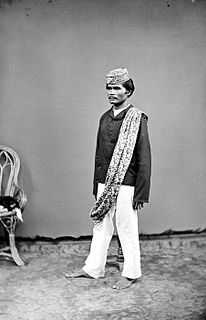
The Makassar people are an ethnic group that inhabits the southern part of the South Peninsula, Sulawesi in Indonesia. They live around Makassar, the capital city of the province of South Sulawesi, as well as the Konjo highlands, the coastal areas, and the Selayar and Spermonde islands. They speak Makassarese, which is closely related to Buginese and also a Malay creole called Makassar Malay.
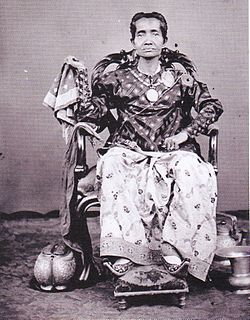
Siti Aisyah We Tenriolle was the Queen ("Datu") regent of the Kingdom of Tanete, South Sulawesi from 1855-1910.
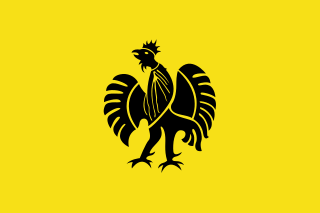
Sultanate of Gowa, was one of the great kingdoms and the most successful kingdom in the South Sulawesi region. People of this kingdom come from the Makassar tribe who lived in the south end and the west coast of southern Sulawesi.
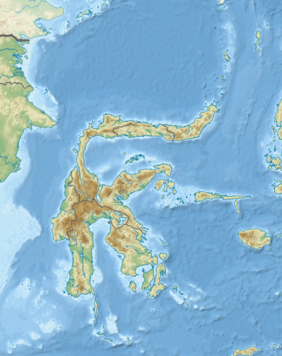
The Makassar kingdom of Gowa emerged around 1300 as one of many agrarian chiefdoms in the Indonesian peninsula of South Sulawesi. From the sixteenth century onward, Gowa and its coastal ally Talloq became the first powers to dominate most of the peninsula, following wide-ranging administrative and military reforms, including the creation of the first bureaucracy in South Sulawesi. The early history of the kingdom has been analyzed as an example of state formation.

The Netherlands Bible Society is a non-denominational Bible society in the Netherlands devoted to translating, publishing, and distributing the Bible at affordable costs. The NBG is based in Haarlem and was formed on 29 June 1814 on the initiative of the British and Foreign Bible Society (BFBS).

